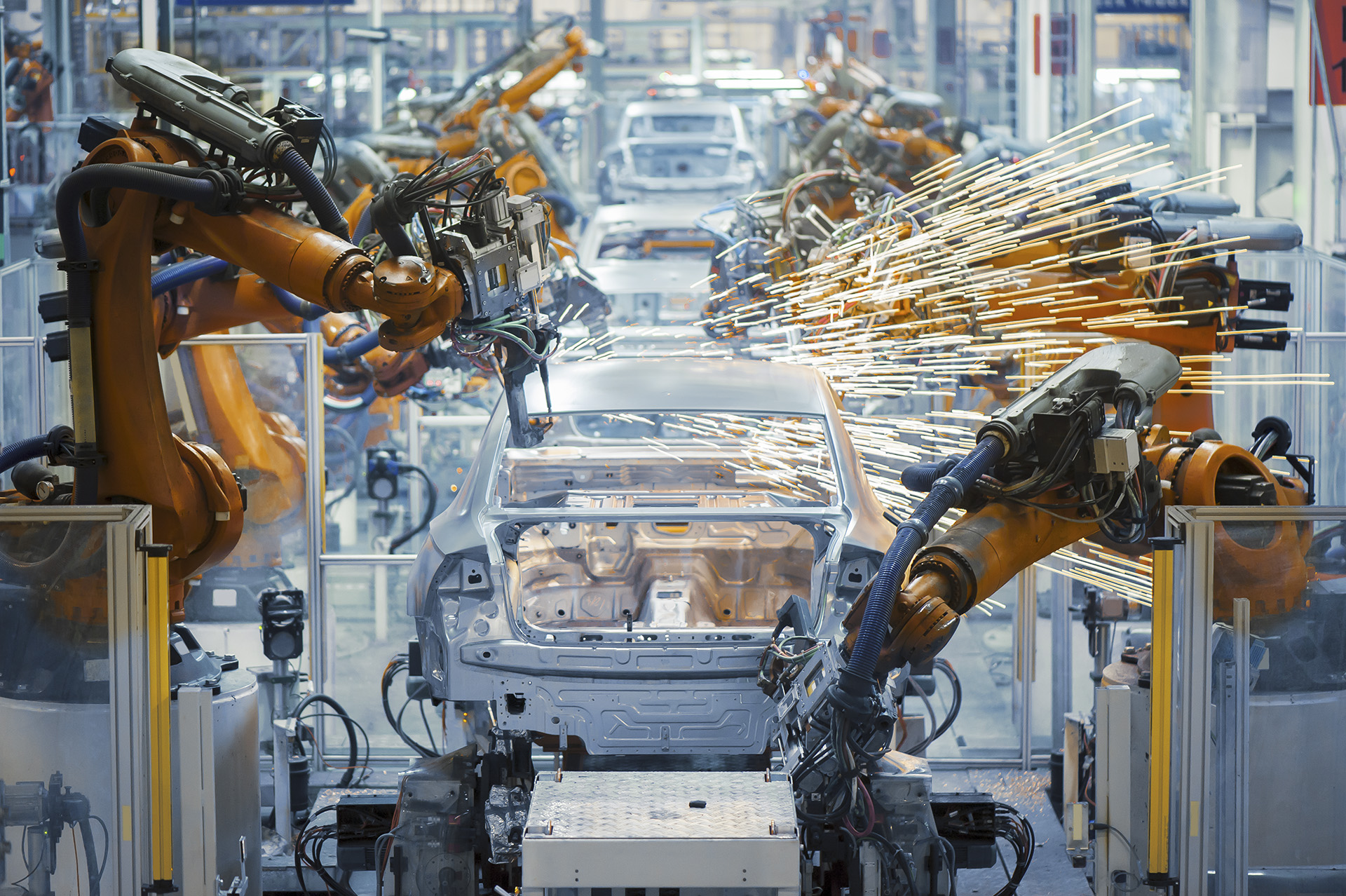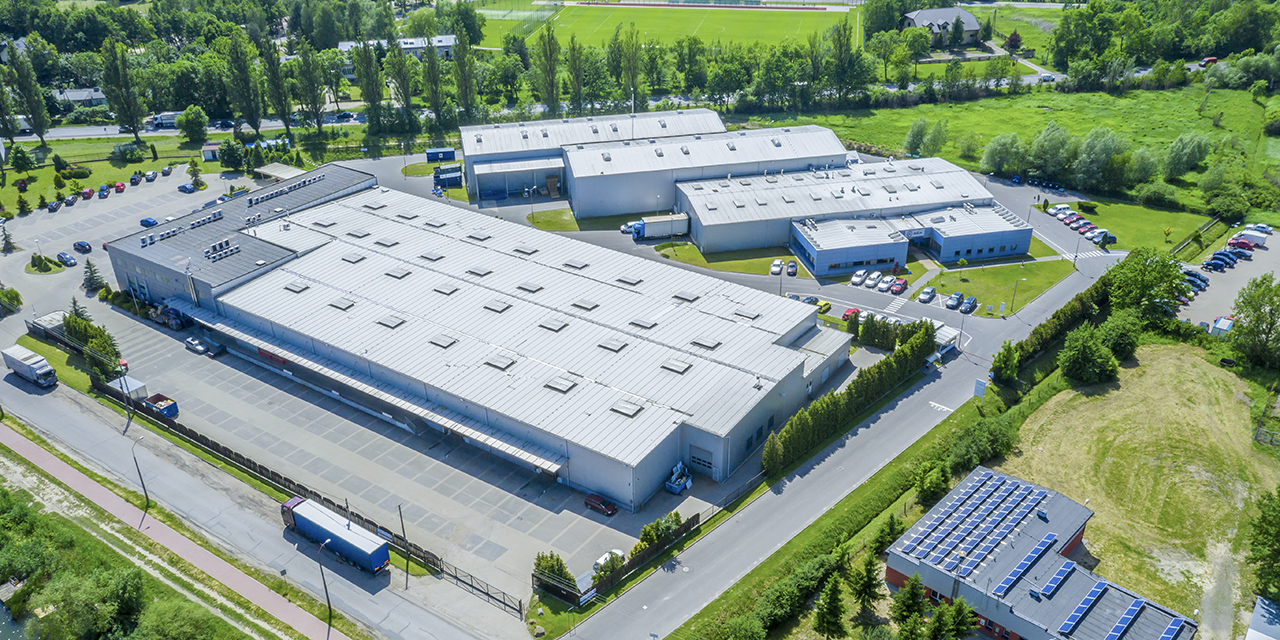Applying robot technology in manufacturing helps businesses improve efficiency and productivity, solve the issues of labour shortage and labour safety, thereby, bringing a lot of development potentials and opportunities for future manufacturing industry.
The growing competition between domestic and international brands, together with the increasingly demanding requirements of consumers for product and service quality, make it more difficult for manufacturers to deliver products that meet customer needs. Therefore, in order to maintain competitiveness and a strong position in the market, manufacturing companies are gradually transforming and starting to apply advanced technologies such as intelligent robot technology into production lines.
The advancement in information technology in the 4.0 industrial revolution has led to the integration of advanced technologies such as artificial intelligence, cloud platforms or big data networks into today’s intelligent industrial robot systems becoming more and more popular, as an inevitable trend to support tasks implementation to boost business productivity.
Industrial robots are machines and devices that can perform tasks automatically through the control of electronic tools such as computers or pre-programmed electronic microchips. They are considered not only as a solution to improve the manufacturing efficiency but also as a way to limit the risks of errors in production while reduce labour accidents.
Their ability not only stops at performing simple repetitive tasks, but also can perform operations that require high precision. Industrial robots are often integrated in modern production lines, replacing human efforts and creating products with same precision to meet higher standards.
Applications of robotic technology in the manufacturing industry
Robots have been widely applied in many processes and production lines, bringing benefits not only to businesses or factories but also to workers. A few common applications of robots in the manufacturing industry can be mentioned as followed.
Light industrial robot arm with robot vision
Designed with a laser sensor eye and camera array, light industrial robots with robotic vision can see, respond instantly, and perform tasks with precision. Therefore, these robots can do jobs such as installing windshields or fenders in car manufacturing with precision while save much time than usual conventional industrial robotic arms(1).
Collaborative robots
Many businesses today tend to use new collaborative robots (Cobots) that are light and compact enough to easily move from sites to sites or withinthe warehouse and production areas. These robots are usually about the same size as a pallet and can carry around 500 kilograms in a single shipment.
Cobots help move materials, components, and pallets around the factory to reduce dangerous collisions caused by workers who havie to frequently move among different areas while at the same time, reduce downtime of the transportation process withiin the factory(2).
Industrial robots for heavy-duty jobs in harsh environments
Another type of robot that cannot be ignored is the industrial robot that serves heavy jobs in hazardous environments such as painting or manual welding, solves the current difficulties in the factory such as the shortage of skilled workers.
These robots will be pre-programmed to be able to cover large painting areas or weld pre-arranged welds to save time and limit materials waste for the factory. The working environment of workers in factories using these types of robots is much better guaranteed since their main job will be to monitor the operation process and product quality that the robot has performed according to what has been programmed and take appropriate action when an error occurs(3).

Benefits from the application of robot technology to manufacturing enterprises
Industrial robots bring a lot of potential and development opportunities to the smart manufacturing industry in the future when helping factories not only improve efficiency but also solve the problems of labor shortage and labor safety.
Using industrial robots helps factories improve product quality and production productivity. Automated robots can accelerate the mass production of high-quality and uniform products with precision, non-stop repetition.
The robot’s ability to work is more durable than human labour, so when it has to complete many orders at the same time or when scaling, this robot can work continuously according to the programming made by employees to ensure work progress, help achieve optimal production capacity, limit interruptions within the production process and ensure output quality.
Moreover, industrial automation robots also solve the problem of human shortage in both quantity and quality, and at the same time, improve their working environment. Manufacturing units will no longer have to spend a lot of resources in the process of recruiting new employees or spend a lot of time implementing training routes for workers as before.
Using special industrial robots for heavy work or in hazardous environments will also help reduce the risk of occupational accidents, help protect workers’ health and safety and ensure compliance with occupational safety rules in the factory.

Difficulties in applying robots of manufacturing enterprises
Despite bringing many benefits, many manufacturing enterprises, typically small and medium-sized enterprises in Vietnam, still face many difficulties in accessing and applying intelligent industrial robots in their production activities, such as not having enough investment capital, lack of highly qualified human resources or workers who do not accept changes.
The first difficulty comes from the limited investment capital for the information technology system and modern robotic equipment. Despite the great demand, many businesses currently do not have enough resources and strategic orientation in this investment process. Many investors are still concerned about the performance and cost of new technology equipment or whether a smart factory is really more optimal than the traditional factory with such current labour costs.
In addition, to be able to apply and control modern machinery production lines require enterprises to have a team of qualified and highly technical human resources. This causes a lot of difficulties for the recruitment and training process within the organization because most of the current human resources in many factory systems do not have high technical qualifications, never worked with modern machinery and technology, but only did repetitive jobs in the production line.
The last difficulty can be mentioned that many employees are afraid of losing their current jobs when applying industrial robots to production line activities, so they have not really fully applied advanced technologies to improve their work in the factory. However, according to a report by Asia Development Bank, the adoption of robots and other connected systems has created 134 million new jobs compared to 101 million jobs lost due to new technology and thereby boosted productivity and higher economic growth(4).
Reality of robot application in Vietnam
The application of robots to production lines and automation to improve productivity and ensure production precision is increasingly common in many factories around the world. However, in Vietnam, the robot market is not really open, due to many difficulties in investment capital and lack of highly qualified workers, most production lines in factories are still not automated, machines still use old technology and just apply information technology and automation into certain lines(5).
Machine lines mainly still operate at a simple level, while complex jobs requiring meticulousness still depend entirely on factory workers. Therefore, the quality of outputs of Vietnamese enterprises is sometimes still uneven with higher prices, making it difficult to compete with other international enterprises.
Another problem many Vietnamese enterprises face is that they are still quite vague and do not know which stage to apply robots in their production lines and whether it is worth investing such a large amount of money while the productivity and profit earned after applying robots have not yet known.
However, in order to promote the ever-growing innovation network in Vietnam, the State and Ministries and Agencies have approved and promulgated many mechanisms and policies to support universities, scientific & technology organizations “to attract international scientists, experts, and Vietnamese experts abroad as the core to promote technology research, development and transfer” to bring new technologies, automation into the manufacturing process of Vietnam(6).
Towards the future
In the 4.0 industrial revolution, with the competition of many businesses, organizations need to focus on building a small-scale, high-level automatic robot system to be able to efficiently manufacture products for large enterprises.
In addition, the government also needs to support in investing in infrastructure and training human resources to create a foundation for applying technology for daily operations within the factory. Not only that, it is necessary to have cooperation and coordination projects with foreign businesses and experts to support businesses in the innovation and creation process of technology and production lines.
Once fully equipped with human resources and information technology infrastructure, manufacturing enterprises in Vietnam will have the opportunity to catch up with developed enterprises in the world.
References
(1) Vulatech. N.d. Ứng dụng của robot trong sản xuất công nghiệp.
(2) Ifactory. 2020. Xu hướng sử dụng robot trong các nhà máy sản xuất.
(3) Uniduc. 2020. Ứng dụng của cánh tay Robot trong sản xuất ô tô.
(4) Adb. 2018. Asian Development Outlook 2018 How Technology Affects Jobs.
(5) Nhân dân. 2018. Ứng dụng công nghệ rô-bốt trong cách mạng công nghiệp 4.0.
(6) Báo Tuyên Quang. 2018. Ứng dụng Công nghệ robot: Nhu cầu lớn, thách thức cao.





